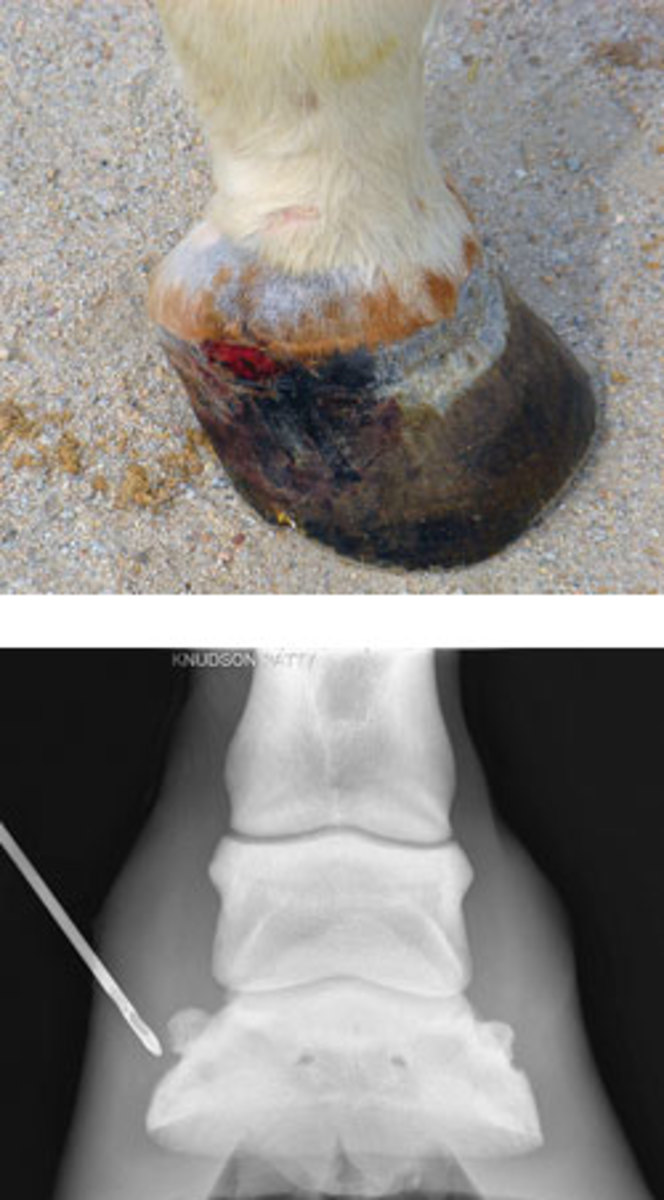
Wounds on the coronary band, the hairline at the top of the hoof wall, can sometimes be confusing as to their significance and how to treat them. These differences are the result of the etiology (or cause), and I’d like to define some of these differences.
Perhaps the most common wound is from a cut such as might be incurred from a horse getting its heel caught over a wire, or even an over-reach wound. These wounds are fairly obvious as to cause, and the treatment is straightforward: Bandaging with the appropriate medication applied is all that’s usually necessary. Systemic antibiotics may be indicated if the trauma is extensive.
Another type of wound noticed at the coronary band is the result of an infection in the hoof capsule that will break and drain at this site. The history here will usually be a horse that shows up spontaneously very lame with no external signs. The horse will have heat in the foot, an exaggerated digital pulse, and usually be sore to pressure over some part of the foot if hoof testers are applied. In time, possibly with the help of soaking the foot in hot water and Epsom salts a couple of times a day, the infection will come to a head and break out at the hairline. When this sign is noticed, the horse starts to get better and no further treatment than soaking the foot until the horse is sound is indicated.
The third type of coronary band wound I’ll discuss can be the most challenging to deal with. The horse presents suddenly lame with a small, innocuous appearing wound, or slit, at the hairline. The lameness will be inordinately severe relative to the appearance of the wound. In these cases, the wound will need to be explored more fully to understand the problem. These are puncture wounds caused by a horse pulling its foot away from under an object. If that object is wooden, there may be a piece of wood broken off and lying buried between the hoof wall and coffin bone. This situation is analogous to getting a splinter under your fingernail. So, the treatment here often involves dissecting away some of the hoof wall and exploring the wound. Cleaning out the wound and treating it locally, along with systemic antibiotics, is usually necessary to affect the desired result.
Significant trauma to the coronary band will often result in a defect in the growth of the hoof wall. Horses that have an infection break out at the hairline usually develop a small horizontal crack that will grow out to the ground level. Horses with wounds through the coronary band will sometimes grow a vertical defect in the wall that’s permanent, but usually no threat to function.










